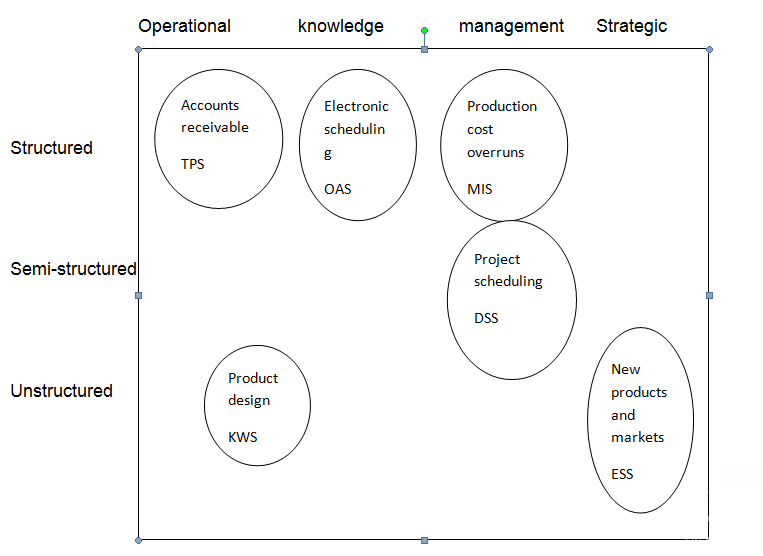Levels Decision making
Organization levels that comprise of strategic, management, knowledge, and operational levels of the organization classify decision-making. Strategic decision-making determines the objectives, resources, and policies of the organization. Management level decision making controls the efficiency and effectiveness utilization of resources and the performance of operational units (Davenport 236).
Knowledge level decision making evaluates new ideas for products, services, ways to communicate new knowledge and ways to distribute information throughout the organization. Operational level decision-making decides on the specific tasks specified by upper and middle management establishes the criteria for completion and allocation of resources. These levels classify decisions into structured, semi structured, and unstructured decisions (Tarn 22).
Structured Decisions
Organizations operate following specific set routines governed by certain set decisions. According to …………., the decisions that ensure routine running of the firm are structured because they oversee the running of an organization under situations that are established.
All data is entered as transactions take place during the running of the company. The data stored provides clerical workers and operational managers with date-to-date information. For instance, customer’s ability to receive credit is determined by a lower level supervisor according to the predetermined criteria (Tarn 24).
Semi-Structured
They are decisions made according to the provided routine summary and exceptions reports. The data used include existing corporate data and data flows that is present and past data. For example, decision support system helps managers to make decisions on the unique, rapidly changing and emergent decisions concerning the market.
They use external sources such as the current stock prices or product price of competitors. They use a variety of models to analyze data or condense large amounts of data into a form analyzable by the decision makers.
They are designed in a way that the user can work with it directly. The system has user-friendly software in such a way that the user can change assumptions and ask new questions (Tarn 34).
Unstructured decisions
They are non-routine decisions in which the decision maker must provide judgment, evaluation, and insights into the problem definition, and there is no agreed upon procedure for making such decisions. For example, knowledge workers system helps knowledge workers in the creation and integration of new knowledge in the organization.
Knowledge workers hold formal universities degrees or a recognized profession like engineers, doctors, scientists and lawyers (Davenport 317).
Their job in the organization is to create new information and knowledge, promote the creation of new knowledge, and ensure that new knowledge and expertise are properly integrated into the business. However, data workers have less formal, advanced educational degrees and tend to process rather than create information.
They only manipulate and disseminate information that consists of secretaries, accountants or filing clerks. They filter, compress, and track critical data to obtain information useful to executives to solve problems in the organization (Tarn 27).
The grid below shows the different kinds of information systems at the various organizational levels in different types of decisions (davenport 207).

(Source: davenport 207).
Conclusion
Decision-making remains one of the most challenging roles of a manager. Information systems have helped managers communicate and distribute information. However, they have provided limited assistance for management decision making.
Works Cited
Davenport, Thomas. Mission critical: realizing the promise of enterprise systems. New York: Harvard Business Press. 2000.
Tarn, Michael. Enterprise systems education in the 21st century. New York: Idea Group Incorporation. 2007.